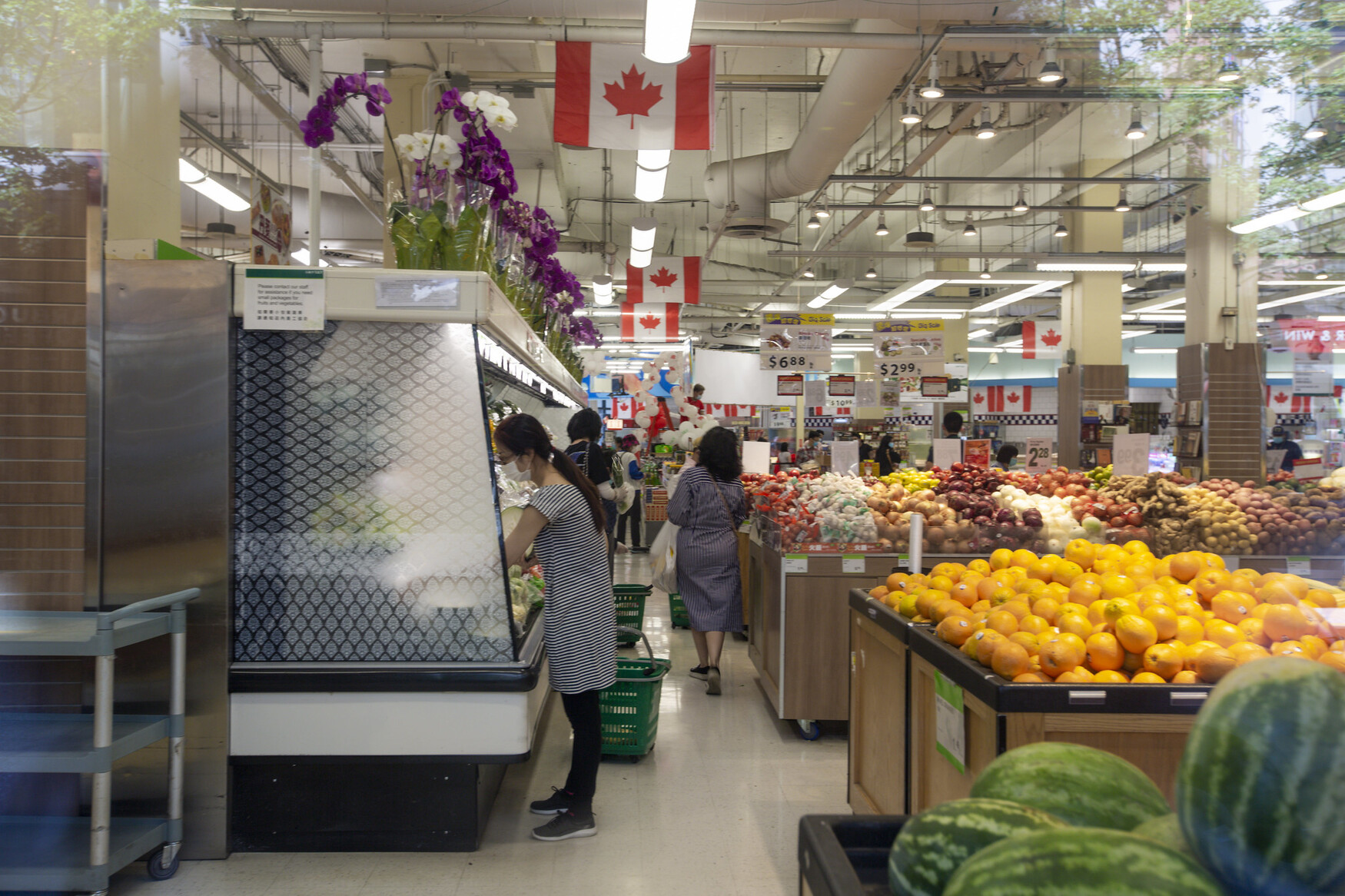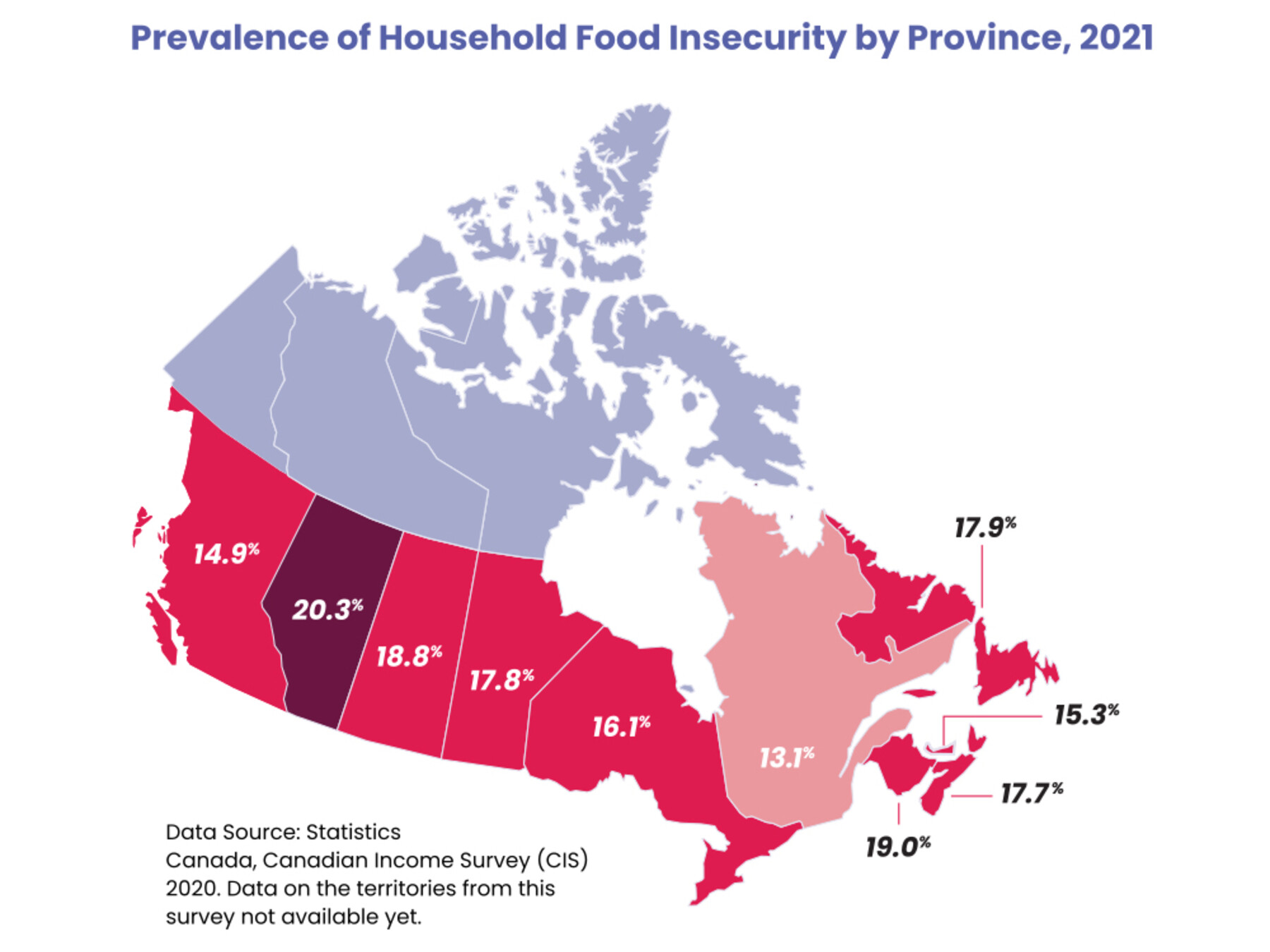Mobile Menu
- Education
- Research
-
Students
- High School Outreach
- Undergraduate & Beyond: Community of Support
- Current Students
- Faculty & Staff
- Alumni
- News & Events
- Giving
- About

The latest national data from researchers at the University of Toronto show that food insecurity in Canada has remained largely unchanged over the last three years, with stark differences among the provinces.
The report shows that 15.9 per cent of households across the ten provinces experienced some degree of food insecurity in the year before fall 2021, with little change since 2019. Researchers define food insecurity as inadequate or insecure access to food due to financial constraint.

“We’ve seen no palpable improvement in food insecurity for low-income households in Canada,” said Valerie Tarasuk, a professor of nutritional sciences at U of T’s Temerty Faculty of Medicine, whose research group PROOF led the study with data from Statistics Canada.
In the same period, Quebec had the lowest rate of household food insecurity at 13.1 per cent, while Alberta was highest among the provinces at 20.3 per cent. “Quebec has emerged with consistently lower food insecurity than other provinces, which I think speaks to the power of provincial policy,” Tarasuk said.
Policy structures and payments for low-income households in Quebec differ from other provinces in several areas, including income support, workplace benefits and child care.
“Social programs in Quebec are targeted to the vulnerable in ways we don’t always see in other provinces,” said Tarasuk, who is also affiliated with U of T’s Dalla Lana School of Public Health and Lawson Centre for Child Nutrition. “Some focus on families with children, and all are indexed to inflation, which matters hugely at a time like this.”
Quebec has done especially well addressing severe food insecurity, the new report shows. People living in Quebec were less than half as likely (2.8 versus 6.3 per cent) as those in Alberta to experience severe food insecurity, which includes hunger and is most strongly associated with increased health care spending, poor health outcomes and premature death.
“It’s not like Quebec is off the charts, and we saw hints of this difference before 2019,” said Tarasuk. “But their low rates warrant more study, so we can continue to build on findings by our group and others that show the importance of higher minimum wage and more generous social programs for reducing food insecurity.”

Ontario was middle-of-the-pack for both severe and overall food insecurity, at 4.6 and 16.1 per cent, respectively. That equates to well over 2 million people living with food insecurity in Ontario, the province with the largest population. Across all provinces, 5.8 million people now live in food-insecure households, including almost 1.4 million children.
The survey does not include people living on Indigenous reserves, but the rate of food insecurity among off-reserve Indigenous peoples was 30.7 per cent. Other studies have also shown high vulnerability among on-reserve communities.
New data on the territories is not available yet, but the most recent numbers from Statistics Canada for 2020 — which only include moderate and severe food insecurity — are grim: 46.1 per cent in Nunavut, 23.1% in the Northwest Territories and 15.3% in Yukon.
The PROOF report drew on data from 54,000 households in Statistics Canada’s Canadian Income Survey. This is a change for Tarasuk’s team, which had tracked food insecurity since 2011 through the Canadian Community Health Survey. Both surveys employ the Household Food Security Survey Module, but Tarasuk says the income survey has a better response rate and is likely more representative of the Canadian population.
The change has allowed Tarasuk’s group to access data on food insecurity shortly after collection, and to compare numbers annually across all provinces. “Historically, some provinces including Ontario opted out of the survey module in some years, which left holes in the data,” Tarasuk said. “We now get consistent data in almost real time.”
The new data has also enabled soon-to-publish studies from Tarasuk’s lab on the Canada Child Benefit and Employment Insurance relative to food insecurity. This research will add to the large body of evidence on how federal and provincial policies can reduce food insecurity by improving incomes of low-income households.
Data based on the Canadian Income Survey show higher rates of food insecurity than those collected in the Canadian Community Health Survey. But Tarasuk cautioned against comparing the two data sets and drawing the conclusion that food insecurity has worsened between 2018 and 2021.
Tarasuk said it was surprising that food insecurity did not appear to worsen during the pandemic, and that quick action by governments to introduce income supports may have prevented more widespread food insecurity.
But she is quick to stress that the problem hasn’t gotten better and could soon get a lot worse. “The situation now is that inflation and prices are skyrocketing,” Tarasuk said. “People with severe food insecurity will suffer more deprivation, and more often turn to acts of desperation in the face of hunger. That’s the urgent challenge for policymakers.”
The research was supported by the Canadian Institutes of Health Research.

